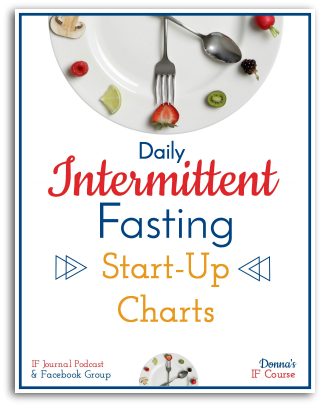Before you get too far into the recipes here on the blog (and I start getting messages telling me that erythritol is a bad sugar substitute or that whipping cream has too much fat or that sugar free jello is evil 🙂 ), I want to loosely define the word “healthy”—and give some caveats to the Healthy Mixes e-book series.
Every proponent of an eating plan thinks that their eating plan is the best, the healthiest, the most nutritious, the most effective. And every follower of said eating plan will tell you why the others are bad…not healthy, not good for weight loss, etc.
For example, Paleo followers have certain flours that are allowed and the reasons for those flours—and I’m sure that true adherents do not eat something that is on another plan’s “healthy” list if it is not on their healthy list. Very low carb eaters will tell you that apples and bananas are bad (too high in carbs/high on the glycemic index list), but sugar-free jello is good. Trim Healthy Mamas will tell you that their S meals and E meals are the best—and never the two shall meet (well, I guess the two can meet in a crossover meal!). Then they will eat a cold meat sandwich on sprouted bread, which more natural proponents would say is completely unhealthy (the cold meat part). So what is healthy?
For the purposes of the Healthy Mixes e-book series, these are some things you should know up front:
1) Most of the recipes are gluten-free (except for the sprouted flour mix for yeast baking—but even then, simple substitutions make that mix gluten-free or more gluten-tolerable easily).
2) Most of the recipes are not dairy-free. It’s been my experience that dairy-free people have their substitutions down pat, so I will leave that to you to tweak—plus, I’m all about dairy as a former very low carb dieter (i.e. cheese, cream cheese, whipping cream etc.), so I don’t want to talk about things I do not have that much experience in.
3) Most of the recipes are lower in carbohydrates/lower on the Glycemic Index. This occurs through the use of non-wheat flours, sprouted flours, healthy sugar substitutes, and more. (Again, the keys at the end of each recipe will guide you in tweaking recipes to your way of eating and cooking.)
4) All of the recipes are sugar-free. I recommend types of sugar substitutes that are healthy and are workable substitutions for the types of sugar that, that similar sugar-filled recipes call for. (See Healthy Sugar Substitutes Chart at the blog or in the free e-book.)
5) When it comes to fats, the amount of fat in the recipes is based on the recipe type. I am not a “very low carb” or “keto” or “low carb/high fat” dieter (i.e. thirty carbs a day or fewer) anymore—ask me how Plexus supplements allowed me to increase my carbs to one hundred per day and still lose weight and have no pre-diabetic symptoms! However, I have been before, so I know how to make recipes fit into that eating plan. (See the Recipe Key at the bottom of each recipe, Very Low Carb.) Generally speaking, when something is made to be very low carb, it is often very high in fat. For example, the sugar, dairy, and flours that are usually used in typical recipes are replaced by full fat cream cheese, whipping cream, butter, almond flour, etc., in order for a recipe to become very low carb and yet flavorful. “Healthy Mixes” books will offer suggestions for making something very low carb but do not usually lean on the very high fat side (since fat has more than twice the calories per gram as protein and carbohydrates—most high fat foods are higher in calories than our bodies really need). Yes, healthy fats are great….but even too much of a good thing can be bad for us.
6) When it comes to protein, any time you use more real foods, you automatically have better carbs, protein, and fats. The same is true when you use real foods in mixes. Some mixes use the addition of good quality protein powder (whey) to increase protein further.
7) One of the beauties of cooking and baking with mixes is the speed, efficiency, and ease of kitchen work that they help provide. In that way, they are a lot like store bought mixes—convenient. Occasionally, a recipe in one of these books will have less than perfect (i.e. not so real) ingredients, like sugar free jello or Cool Whip). I know these are not healthy foods—they are included for their convenience. If you are the type of healthy cook who would never use a canned soup or jello box in your kitchen, feel free to skip these few recipes. If you are a Store-Bought-Stella who needs “fast fixes,” these might appeal to you.
That sums up the “healthy” points of my recipes. I am so excited to help you with your healthy cooking and baking journey!
Note: What questions would you like for me to answer in the blog? How can I help you right now to learn to cook and bake more healthfully/lower sugar/lower carb/lower Glycemic Index? Contact me and let me know!












